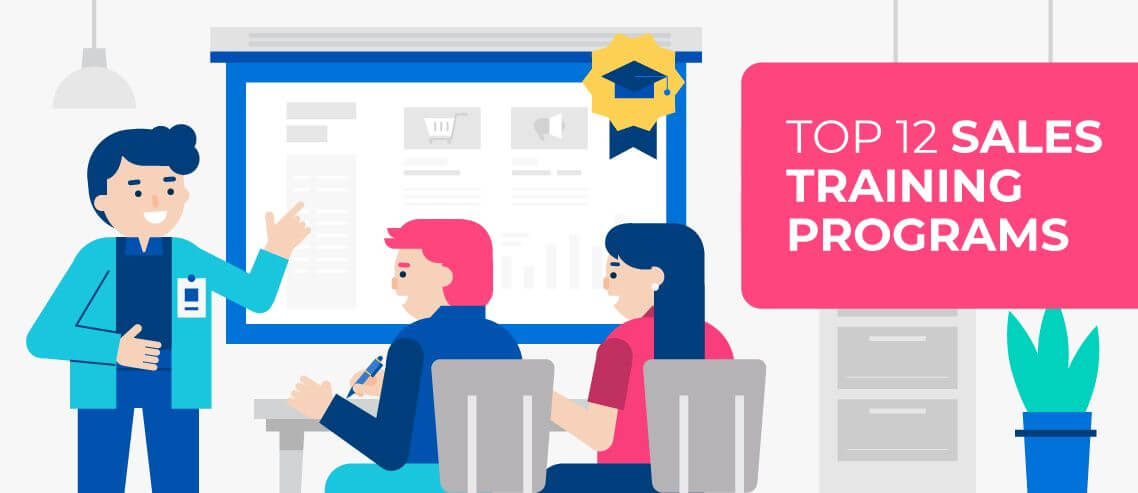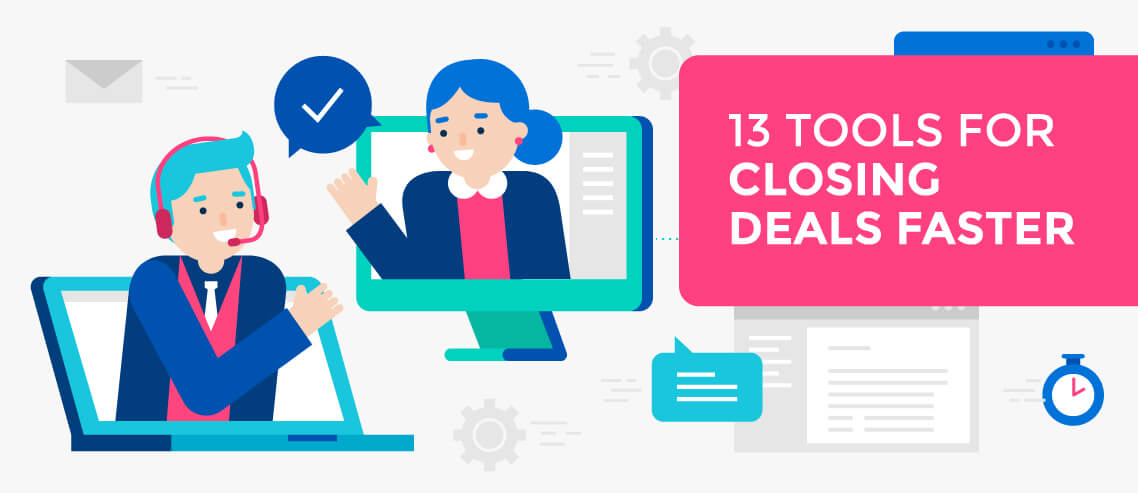How to Nail a Sales Presentation

Contents
This is the fourth piece in our ‘sales practitioners’ series, where we get in the weeds with a sales leader about the biggest topics in the sales world. In this article, we chat with Kate Levan, author, communication coach, and founder of Levan Partners, about how to approach your sales presentations to knock them` out of the park every time.
Crushing your next sales presentation is all about getting that critical foot in the door and sparking a great conversation. It boils down to making the presentation more about the audience than about yourself.
Far too often, sales presentations are focused on the product or the salesperson and neglect to address the needs and pain points of the audience. Sometimes this costly error is due to lack of presentation experience, but often it’s attributable to procrastination and failure to plan ahead.
That lack of planning in your presentations means you’ll likely end up using canned slides and just “winging it.” The allotted time then flies by as you rattle off buzzwords and memorized talk tracks, hoping that something sticks.
While you can definitely get lucky with this approach from time to time, you may be wondering if there’s a better and more effective way.
Luckily, there is. I recently sat down with Kate LeVan, author, communication coach, and founder of Levan Partners, to discuss her recent episode on The Salesman Podcast. In the episode, Kate discusses presentation structure, knowing your audience and how they like to be communicated with, and differentiation.
If you’re ready to up your game and create a “wow” experience for your audience, read on for Kate’s top tips on crushing your next sales presentation.
Do Your Homework
One of the first things Kate talks about is the importance of performing an “audience analysis” to figure out as much as you can about those attending your presentation. The benefits of knowing who is in the room and how they like to be communicated with cannot be overstated. In fact, she states unequivocally that salespeople should spend more time on their audience research than on their slides. “This is going to be the source of their [salespeople’s] engagement and their confidence,” she says. Here are some key questions you need to answer:
- Who are the decision makers in the room?
- What’s important to them?
- What does their decision-making process look like?
- Have they recently made a similar purchase?
Coming to your sales presentation fully prepared and having explored the audience research angle can truly set you apart from the competition. However, being truly prepared means more than answering purely rational and routine questions like those above.
Preparation on a higher level also requires you to take a step away from the generic ‘request for proposal’ (RFP) and a step towards the audience’s emotional drivers. Emotions deeply affect buying decisions. “A lot of important decisions are 60-70% based on emotional, political, and cultural reasons,” says Kate.
There are many emotional elements that may consciously or subconsciously determine the success of your presentation. Some questions to consider include:
- What makes them tick? Do they have customs or values they hold higher than others?
- What’s at stake for them bringing you on as a partner?
- What do they worry about? What keeps them up at night?
- Who in the room influences whom? Does the CEO concede to the CTO’s suggestions?
- Does your company culture match theirs?
- What’s important not only to them but to their customers?
As these questions indicate, there’s typically far more going on beneath the surface than most salespeople think about. Knowing the answers to these questions can give you much-needed insight into your audience’s psyche and help you better tailor your presentation to their wants and needs.
Know Your Goal for the Meeting
The objective of your presentation should be clear before you walk through the door. For instance, are you closing the deal today? Or will your audience be taking the information to a higher-level decision maker?
Knowing what authority they have and what the next steps are going to be gives you confidence and a direction to follow. Your job should then be to make them feel confident and see you as a trusted advisor. When you do that, they stop worrying about their problems because you’ve highlighted the solution.
Another thing to consider is how in-depth the presentation might go. Are they going to be asking exhaustive product questions you aren’t qualified to answer? If so, consider bringing a product expert or subject matter expert with you.
Elements of the Pitch
When crafting your presentation, you’ve got to be strategic from the beginning. Start by asking yourself, “What would decision-makers believe constitutes a good meeting?” From there, you can deconstruct those elements to create slides, talking points, and questions to ask. As you prepare each component of your presentation, ask yourself, “What value does this provide them?” If it only serves your interests, then leave it out.
This will take the focus away from your product and RFP and put it on your audience, which is where it should be. Cutting the fluff from your presentation shows respect for your audience, and will help you better connect with them. As Kate notes, this isn’t as common as it should be, but it can really help you stand out and succeed. “When everybody looks alike, the ability to communicate and connect with people is a huge differentiator, and a predictor of success in business,” she says.
Another crucial element of your pitch is to make sure you aren’t using PowerPoint as a script. Instead of reading your slides word for word, use them as a roadmap for the major points you want to hit and nothing more. This will help make your presentation as conversational as possible.
Lastly, think about what you can do to reinforce the ideas in your presentation. One major win is to provide relevant content. In the past, salespeople would hold back their best material until they landed a client. But these days, it’s more critical than ever to demonstrate your expertise upfront to attract a following and ultimately land those paying clients.
Prospects expect to get a taste of what it’s like working with you, so come prepared with stories, videos, books, personalized advice, and relevant statistics. Having references, samples of your work, and case studies on hand can also be extremely helpful.
Ask Great Questions
Being exciting and energetic is important, but make sure you build on that and create a worthwhile experience. The best way to do that is by asking great questions that start a meaningful conversation, not relying on your slides to carry the presentation.
Create touch points prior to your presentation to build rapport and learn more about your audience – that way, you can custom fit your presentation to the key influencers in the room.
Here are some example of questions you might want to ask before, during, and after your presentation:
- We want to give you a productive and satisfying experience in the limited time you’ve afforded us. What can we focus on in our presentation? How can it be the most productive for you?
- What could hold up this deal? What objections might we need to overcome?
- When was the last time you switched software/suppliers?
- At the end of your presentation: What did we miss? Anything we didn’t cover? Anything you’d like to go over in more detail?
Be open to both asking and answering questions. Adapt your presentation on the fly depending on what they ask or what they share when they answer your questions. A less rigid and more conversational atmosphere will make your audience feel more comfortable, instill confidence, and help establish your role as a trusted advisor.
Post-Presentation
Kate says that post-presentation is where the real magic happens, and she’s able to dive deep with her audience. She does this by following her presentation timing rule. “It’s called the ‘50% rule,'” she says. “If you have a half hour, don’t take more than 15 minutes [for your presentation]. Allow time for them to respond.”
Doing so gives her the maximum amount of time to get to know her audience better and make adjustments in the moment, especially if she learned something late in the presentation or during the Q&A. This allows her the opportunity to circle back and make sure she thoroughly addresses questions and concerns her audience might have. It also covers any late starts or delays that inevitably happen.
It also demonstrates to her audience that she’s not just interested in talking, but in listening. “Help them remember you by making time to listen to what they have to say,” Kate advises. Making time for audience feedback is critical.
Your work isn’t done after the presentation is over, either. After you head back to the office, make sure to carve out time to follow up. With the ready availability of texting, email, and instant messaging, you should be following up later that evening or the next day.
The follow-up you send shouldn’t be a generic template or canned response, either. It should be personalized to the prospect. “If you want to stand out, you have to show that you listened,” says Kate. Instead of just thanking them for their time, thank them for some specific insight they shared. Show how much you learned about them. Try something along the lines of, “I’m delighted that I got to know you and your business better. I noticed you’re focused on X this year instead of Y. I hope I adequately explained how we can aid with X.” Then, include some relevant content that can provide even more information.
Use your follow-up as an opportunity to show empathy and provide value with a personal touch.
Crushing a sales presentation isn’t a skill learned overnight. The secret is to practice and refine. Even seasoned salespeople with decades of experience are always looking for ways to tweak their talk track, sharpen their pitch, and invent new ways to get people excited about their product or service.
One of the best ways to get ahead is to be hungry for improvement. Never stop learning and growing. Read books on selling, listen to sales podcasts, and consider getting coaching or training – especially when your audience changes or you’re moving upmarket to the C-suite or key account space.
As Kate says: “Selling is a life skill.” So make it part of yours.





